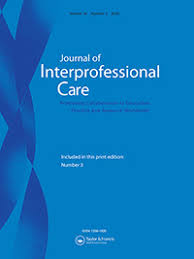NURS-FPX 4010 Assessment 1 Collaboration and Leadership Reflection Video Example Paper 2
NURS-FPX 4010 Assessment 1 Collaboration and Leadership Reflection Video Example Paper 2
Hello everyone, welcome to my collaboration and leadership reflection for Assessment 1. My name is (Insert name).
In this presentation, I intend to:
- Reflect on an interdisciplinary collaboration experience while summarizing a Vila Health Activity, including what was successful and what faltered in achieving the desired outcomes.
- Elaborate on how poor collaboration can result in inefficient management of human and financial resources.
- Explain the best leadership strategies to improve an interdisciplinary team’s ability to achieve collective goals while integrating insights from the literature.
Reflection of an Interdisciplinary Collaboration Experience
Change is inevitable in the healthcare sector, considering the need to provide quality care and address the increasing demand for healthcare services. One of the most profound strategies to enhance healthcare services is integrating technological advances by revamping the existing healthcare systems. After analyzing the importance of new technologies, our organization (Clarion Court Skilled Nursing Facility) embarked on a multidisciplinary commitment to implementing Healthix, a new electronic health record (EHR).
Since we relied on relatively outdated health record systems, the organizational management selected a team to collaborate with designers and information technology (IT) experts from Healthix for localized installations Capella NURS-FPX 4010 Assessment 1 Assignment Collaboration and Leadership Reflection Video. The team comprised local computer experts, advanced practice registered nurses (APRNs), the director of operations, and administrators.
The team from Healthix headquarters was supposed to interact with the local team to oversee the effective installation and replacement of the existing health record systems. However, that was not the case because IT experts from Healthix opted to ignore our team by downplaying our suggestions regarding the new EHR. Undoubtedly, this factor affected interdisciplinary collaboration, rendering the project ineffective and inefficient.
What went well?
Our team at Clarion Court Skilled Nursing Facility spearheaded an internal preparedness plan for implementing Healthix by embracing new approaches, including convincing the organization to avail resources for the new system. Also, we consolidated opinions from patients and other stakeholders regarding the importance of revamping and replacing old systems with Healthix. As a result, we were adequately prepared to embrace advanced technologies for promoting quality care and enhancing process efficiency.
What did not go well?
Ineffective collaboration between the team from Healthix headquarters and our implementation team hampered the overall process of incorporating a new electronic health record (EHR) system. The external team had a responsibility to design Healthix based on organizational needs and inputs for local professionals. However, IT experts opted to implement it based on their experience and expertise without considering insights from corporate stakeholders. Consequently, this consideration led to dissatisfaction from the local team, project ineffectiveness, and additional risks to patient safety.
How poor collaboration can result in inefficient management of human and financial resources.

Poor collaboration can lead to the inefficient management of human and financial resources due to ineffective communication patterns and conflicting ideologies.
Busari et al. (2017) describe collaboration in healthcare as “the capacity of every healthcare professional to effectively embrace complementary roles within a team, work cooperatively, share responsibilities for problem-solving, and make the decisions needed to formulate and carry out patient care” (p. 228).
In this sense, interprofessional and interdisciplinary collaboration between nurses, physicians, and other stakeholders enhances collective awareness and promotes knowledge and skills.
Amidst the need to deliver quality care in scenarios of financial and human resource constraints, team performance and collaboration enable healthcare professionals to pool skills and competencies together to enhance process effectiveness. In the Vila Health experience case study, it is clear that ineffective collaboration between the Healthix team and local stakeholders affected the overall utilization of financial and human resources to realize the collective objective of implementing the Healthix record system.
The best leadership strategies for enabling interdisciplinary teams to achieve collective goals
Appropriate leadership and change management strategies are crucial in enhancing the team’s effectiveness and ability to realize goals. Xu (2017) proposes transformational and participative leadership as appropriate styles to guarantee proper change management. The author suggests that the transformational leadership style enables nursing leaders to create an ideal impact, motivate followers, integrate intellectual stimulation, and incorporate personal considerations in decisions. On the other hand, participative leadership allows followers to connect and participate in the change management process by being more committed to goals.
Transformational and participative leadership styles complement other strategies for ensuring team effectiveness. Buljac-Samardzic et al. (2020) contend that a lack of team performance is a primary point of susceptibility to quality and safety of care. Further, the authors argue that organizational interventions, including simulation training, effective resource management, and interprofessional collaboration, are practical strategies for enhancing team effectiveness.
In the Vila Health experience, proper change management and leadership strategies were inadequate because they failed to uphold the tenets of interprofessional collaboration. This aspect jeopardized the adoption of Healthix electric health records systems.
In conclusion, interprofessional collaboration is an essential aspect of organizational change in the healthcare sector since it enables stakeholders to consolidate efforts, manage resources, and focus on achieving collective outcomes. The Vila Health experience shows that a lack of stakeholder engagement and participation presents a primary weakness when embracing new ways. Also, change management and leadership strategies determine the trajectories of institutional change by determining the levels of resource management and structural alignment to new ways.
References
Buljac-Samardzic, M., Doekhie, K., & van Wijngaarden, J. (2020). Interventions to improve team effectiveness within health care: a systematic review of the past decade. Human Resources for Health, 18(1). https://doi.org/10.1186/s12960-019-0411-3
Busari, J., Moll, F., & Duits, A. (2017). Understanding the impact of interprofessional collaboration on the quality of care: a case report from a small-scale resource-limited health care environment. Journal Of Multidisciplinary Healthcare, 10, 227-234. https://doi.org/10.2147/jmdh.s140042
Xu, J. (2017). Leadership theory in clinical practice. Chinese Nursing Research, 4(4), 155-157. https://doi.org/10.1016/j.cnre.2017.10.001
